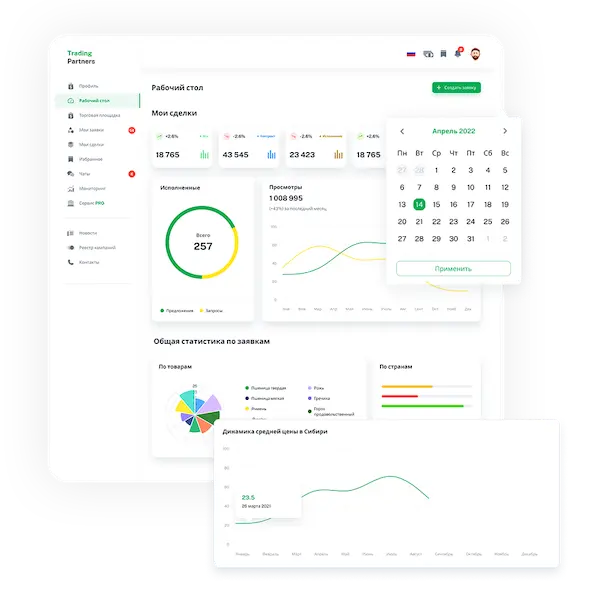In April of the current year, the average value of the FAO Food Price Index reached 128.3 points, exceeding March's figure by 1.2 points (1%) and April of the previous year by 9 points (7.6%). However, this indicator remains below the record set in March 2022 by 31.9 points (19.9%).
In April, the average value of the Cereal Price Index was 111 points, which is 1.3 points (1.2%) higher than the March figure, but slightly lower than the April figure of the previous year (by 0.6 points or 0.5%). The rise in cereal prices is associated with increases in prices of major grains such as wheat and corn, due to reduced exports from Russia, currency fluctuations, and changes in the United States' tariff policy on imports. Additionally, global prices for sorghum, barley, and rice also increased during the month.
Last month, the average value of the Vegetable Oil Price Index decreased to 158 points, which is 3.7 points (2.3%) lower than the March figure, but significantly higher than the April value in 2024 (by 20.7%). The overall decrease in the index is linked to lower palm oil prices, although soybean and rapeseed oil prices continue to rise. Global sunflower oil prices remain stable amid reduced supplies from the Black Sea region.
The Meat Price Index in April reached 121.6 points, which is 3.7 points (3.2%) higher than the March figure and 5 points (4.3%) higher than the April figure of the previous year. The international price increase for all types of meat was particularly noticeable for pork. A contributing factor to the price rise is the steady import demand for meat.
Butter prices continued to rise in April, reaching a new historical high. Increased demand for dairy fats and reduced inventories are influencing the dynamics of butter, dry milk, and cheese prices. The average value of the Dairy Price Index was 152.1 points at the end of last month, which is 3.5 points (2.4%) higher than March and 28.4 points (22.9%) higher than the April 2024 value.
In April, the average value of the Sugar Price Index was 112.8 points, which is 4.1 points (3.5%) lower than the March figure and 13.8 points (10.9%) lower than the April figure of the previous year. The decline in global sugar prices is linked to uncertainty in the global economy and potential implications for the demand in beverage and food industries, where sugar is widely used.

 Trading platform
Trading platform 
 Monitoring
Monitoring  Express applications
Express applications 
 Fork Work
Fork Work 
 Service
Service  News
News  Directory
Directory 













